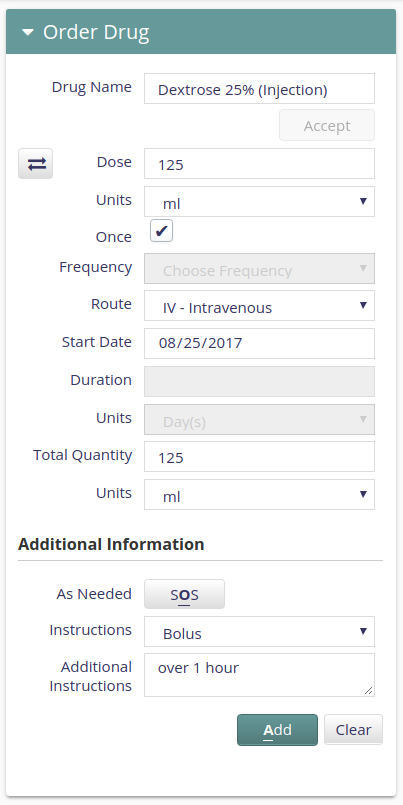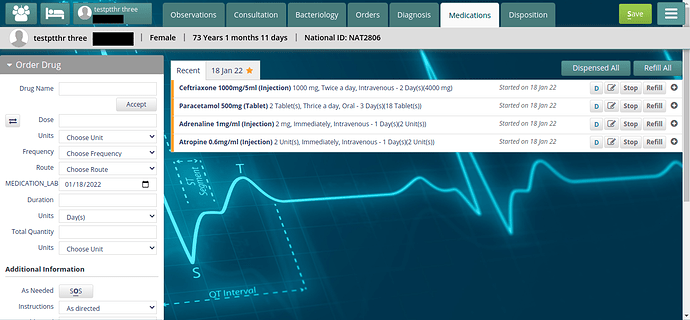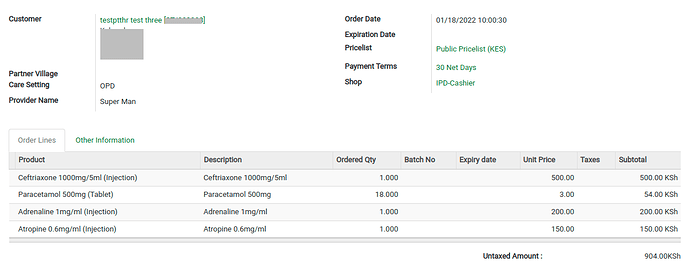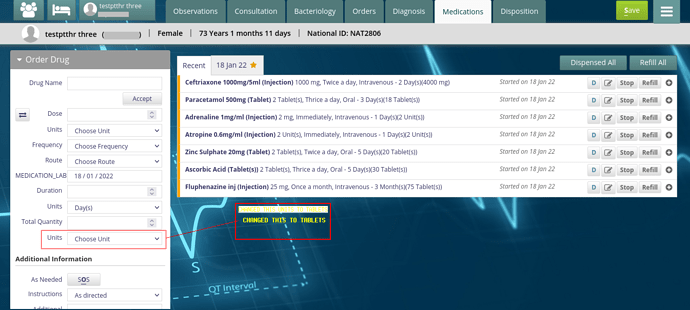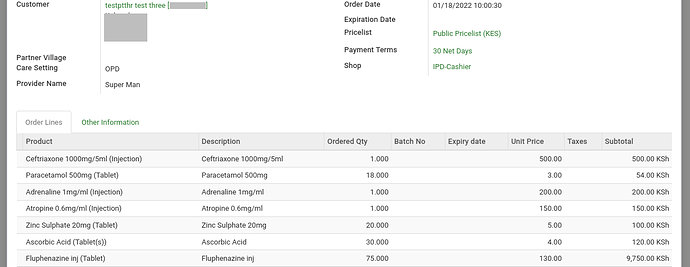Hi everybody!
My idea is to use the medication ordering tab in Bahmni to record IVs ordered but in a very limited way.
So I would like to add the ‘Hour(s)’ and ‘Minute(s)’ to the Duration units (more on this specific task in another coming thread and likely a PR too) and record IVs such as for instance:
Medication order:
- Dextrose 10% 250ml / Immediately 30 Minute(s) Total Amount: 250ml
In the very simple patient flow that I am dealing with, our client would be satisfied with this. The nurse would see this order when the patient comes to her after being seen by the doctor and apply the IV treatment ordered. Not more than that since this is only Outpatient care.
However, the ‘Immediately’ frequency is acting as if it is a ‘Once a day’ frequency.
Looking at the current definition of the ‘Immediately’ frequency from the database indeed the frequency_per_day value is 1 (same as ‘Once a day’). Shouldn’t it be ‘0’ or NULL?
Acutally the term ‘Immediately’ is a bit confusing. It seems to me more like an Instruction rather than a frequency. The frequency term for this instruction could be ‘Once’ or ‘Once only’.
I also noticed that the ‘Immediately’ frequency UUID is ‘0’.
Anyway the problem is when ‘Immediately’ frequency is selected, then the ‘Duration’ is still taken into account to calculate the Total Amount of medication ordered. While maybe it should not be.
Taking the IVs example is not the best here because there is no ‘Minute(s)’ and ‘Hour(s)’ duration units in the Bahmni demo, but we could think of a scenario using ‘Day(s)’ where a medication is ordered for X days, given once and immediately.
Like a nicotine patch let’s say. Then we would like the order to look like:
- Nicotin Patch (X strength) 1 patch / Immediately 2 days Total Amount: 1 patch
Currently it would show: Total Amount: 2 patches
(since ‘Immediately’ currently means ‘Once per day’)
If we agree the above makes sense, I would like to:
1/ Set the ‘Immediately’ frequency_per_day value to ‘0’
2/ Implement a if freq=0 then Total Amount = Dose. So the duration is skipped in the calculation when the frequency is ‘Immediately’.
3/ Set a correct UUID for the ‘Immediately’ frequency
4/ Maybe rename the ‘Immediately’ to ‘Once’, but that’s optional

